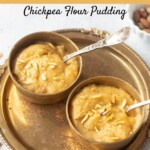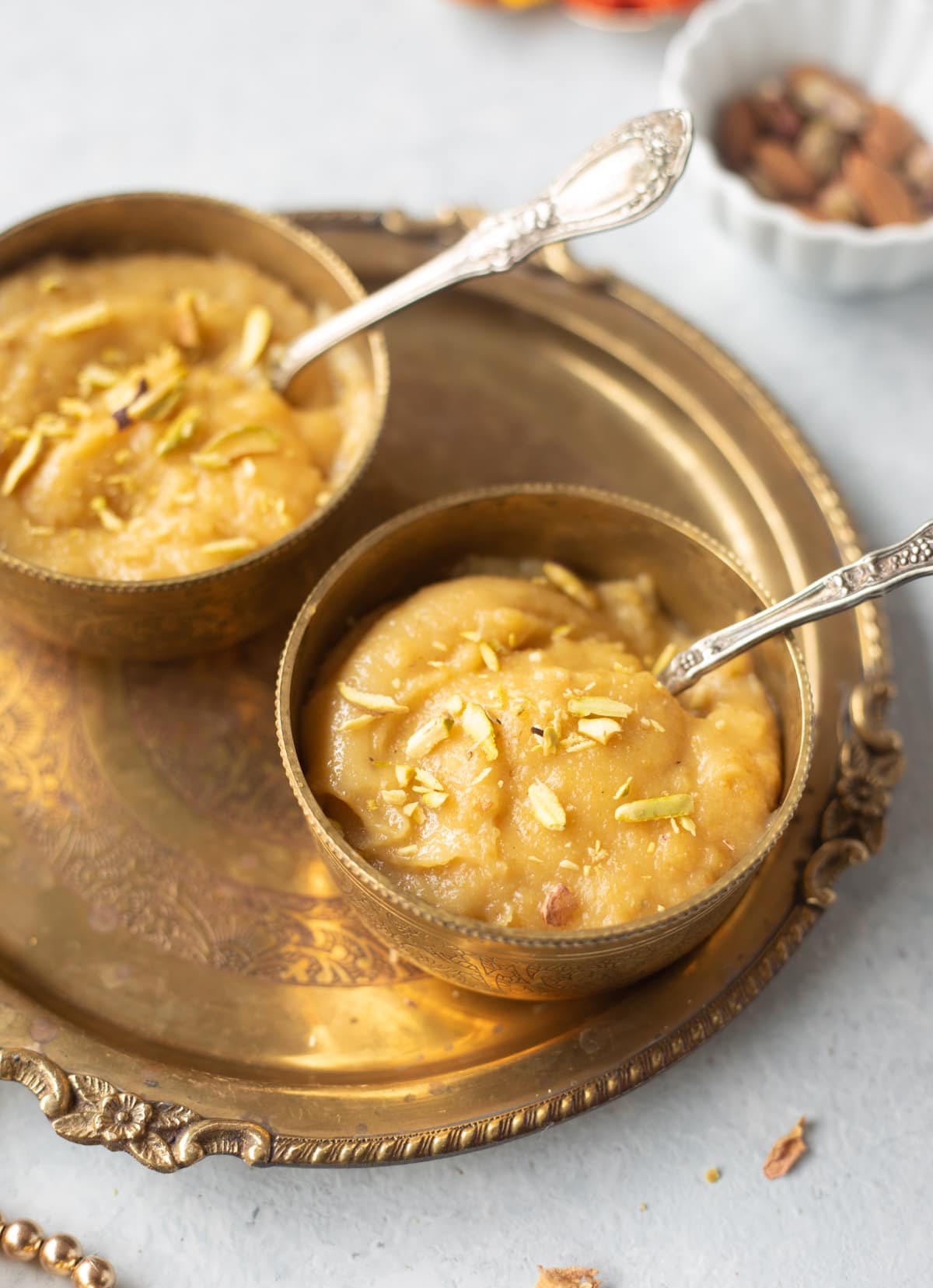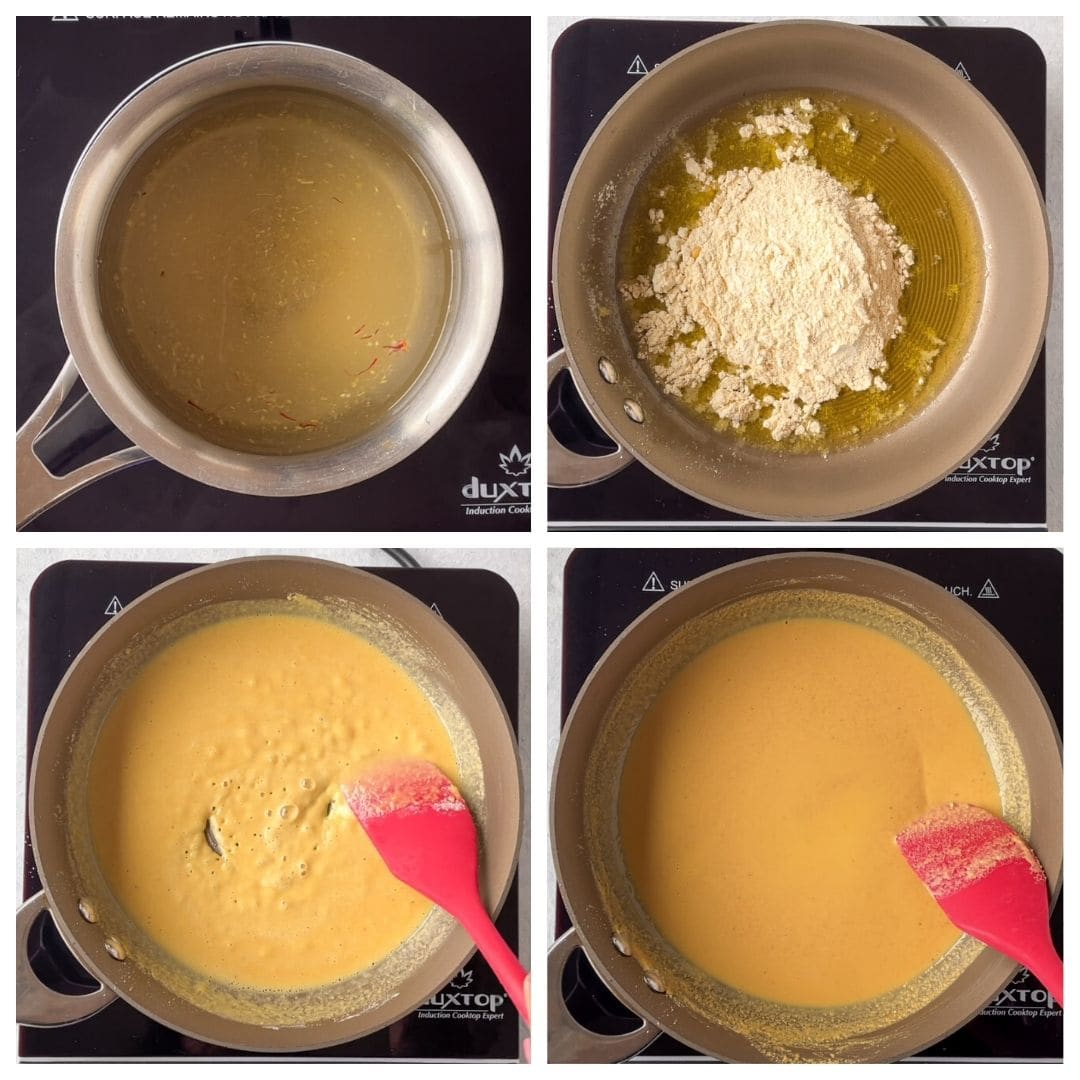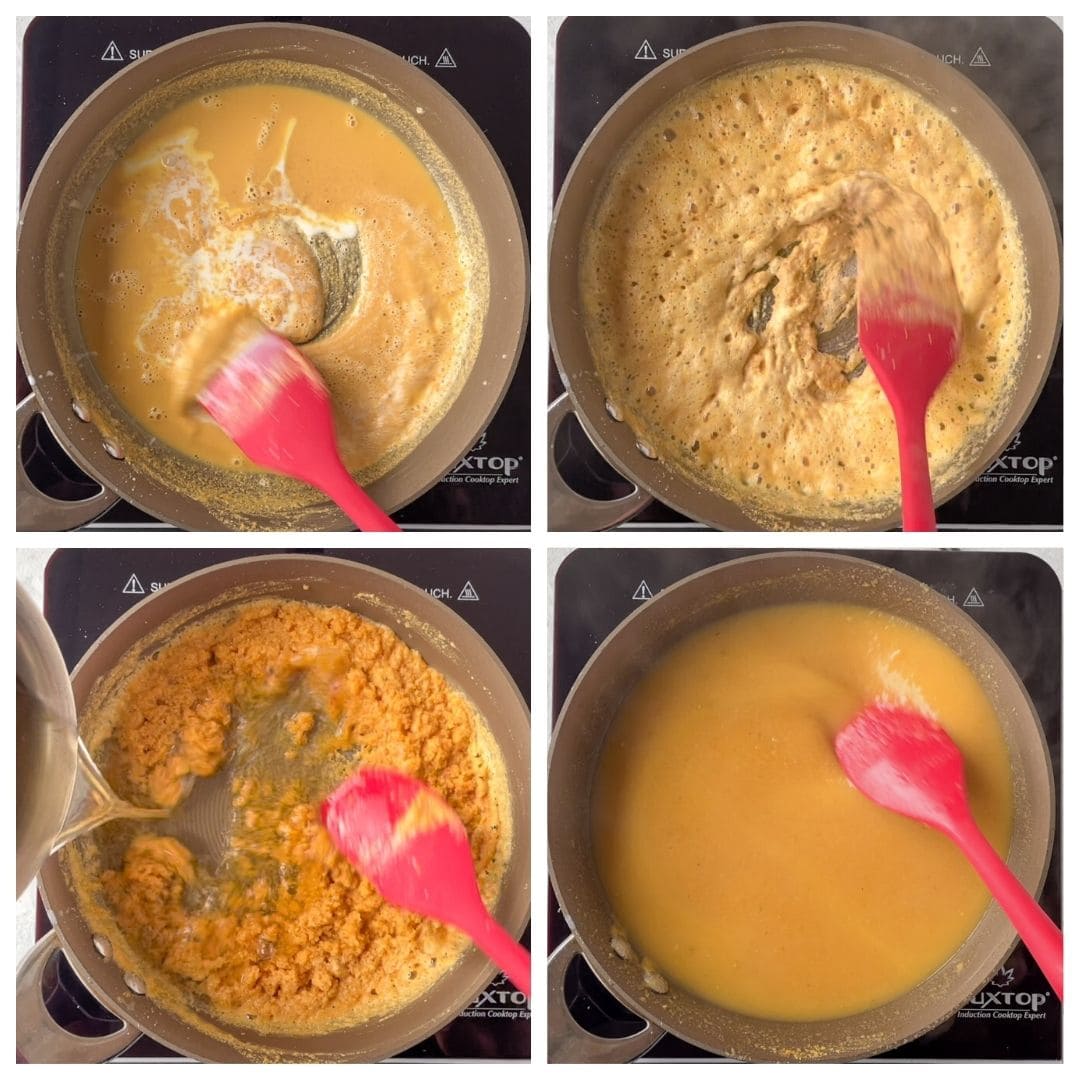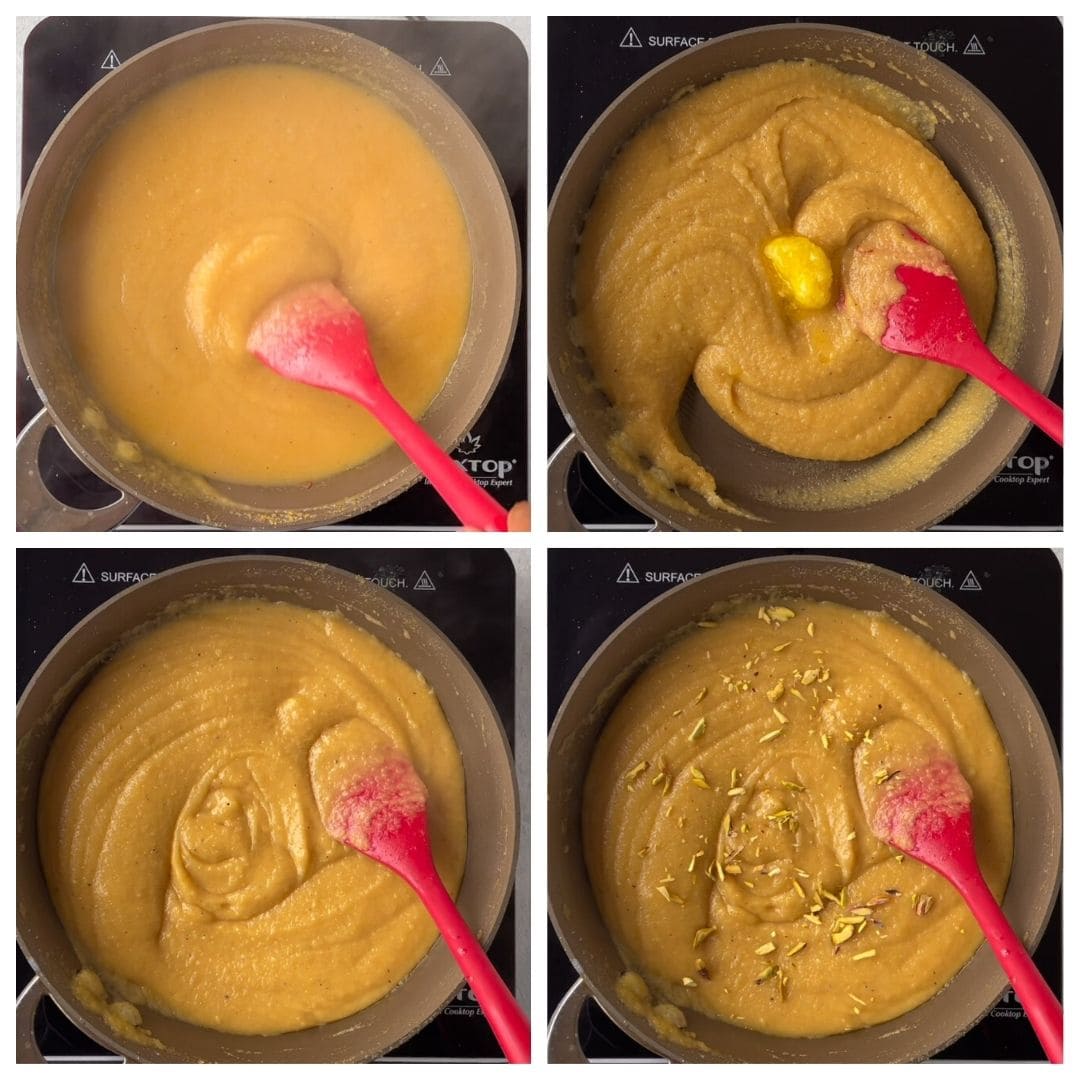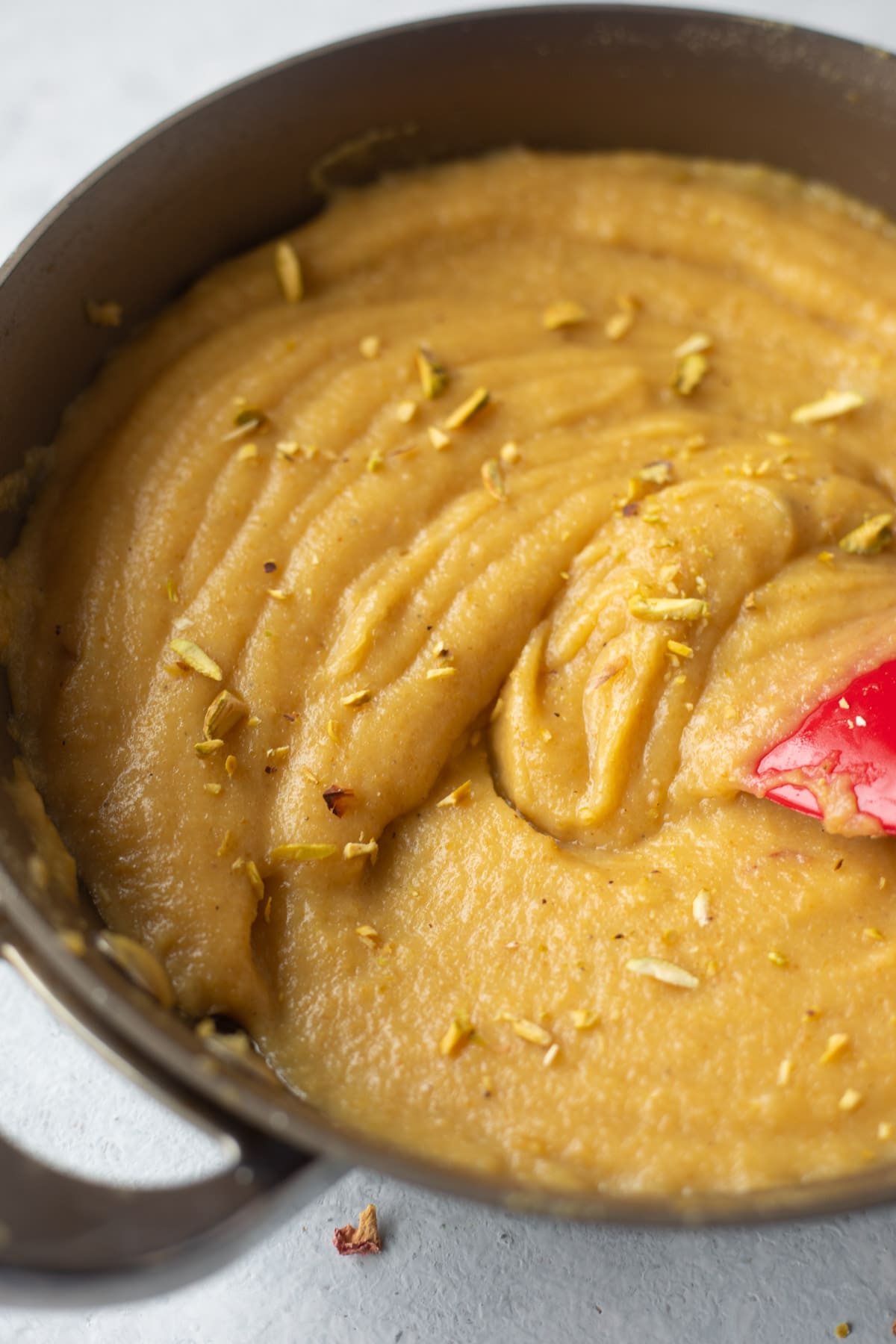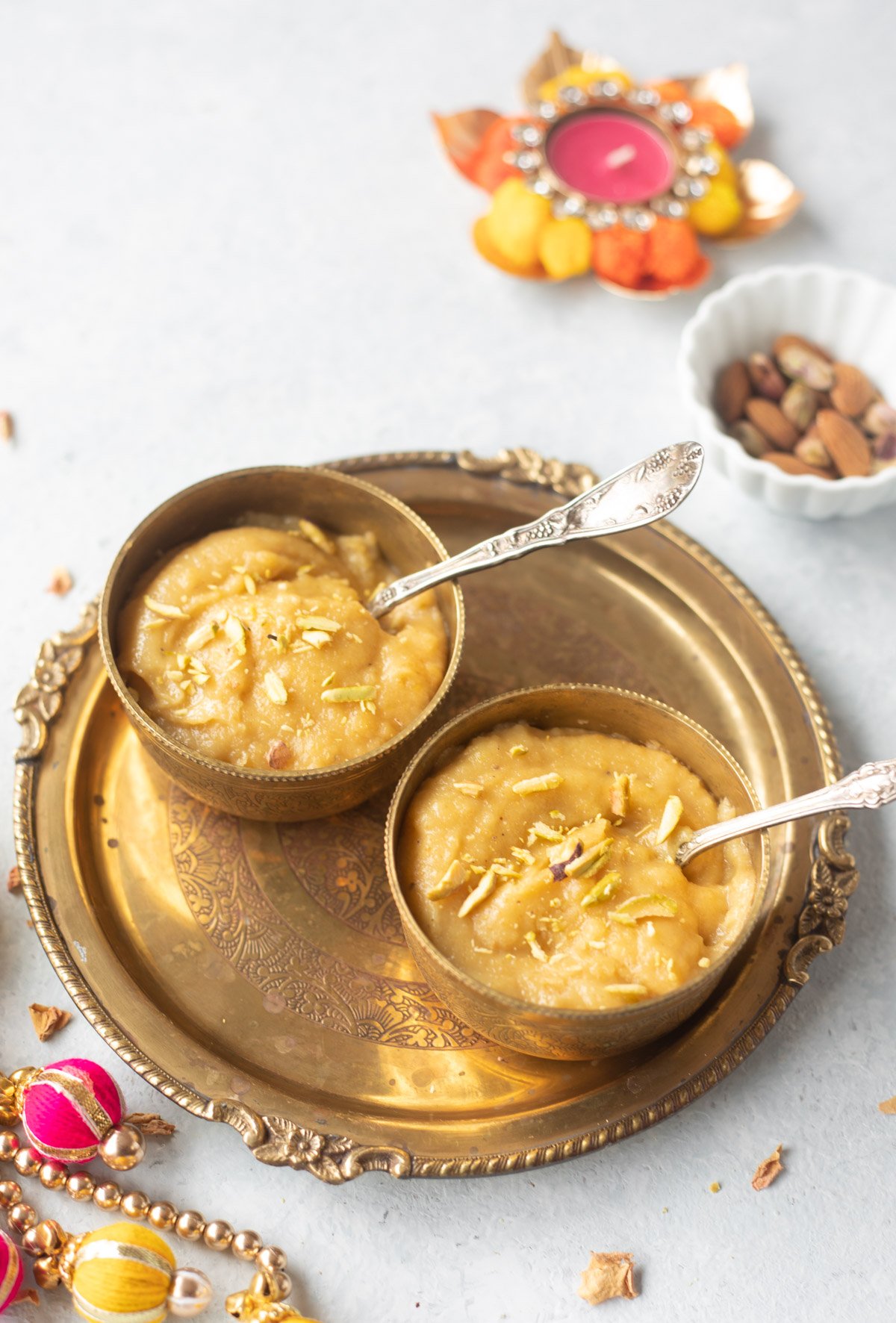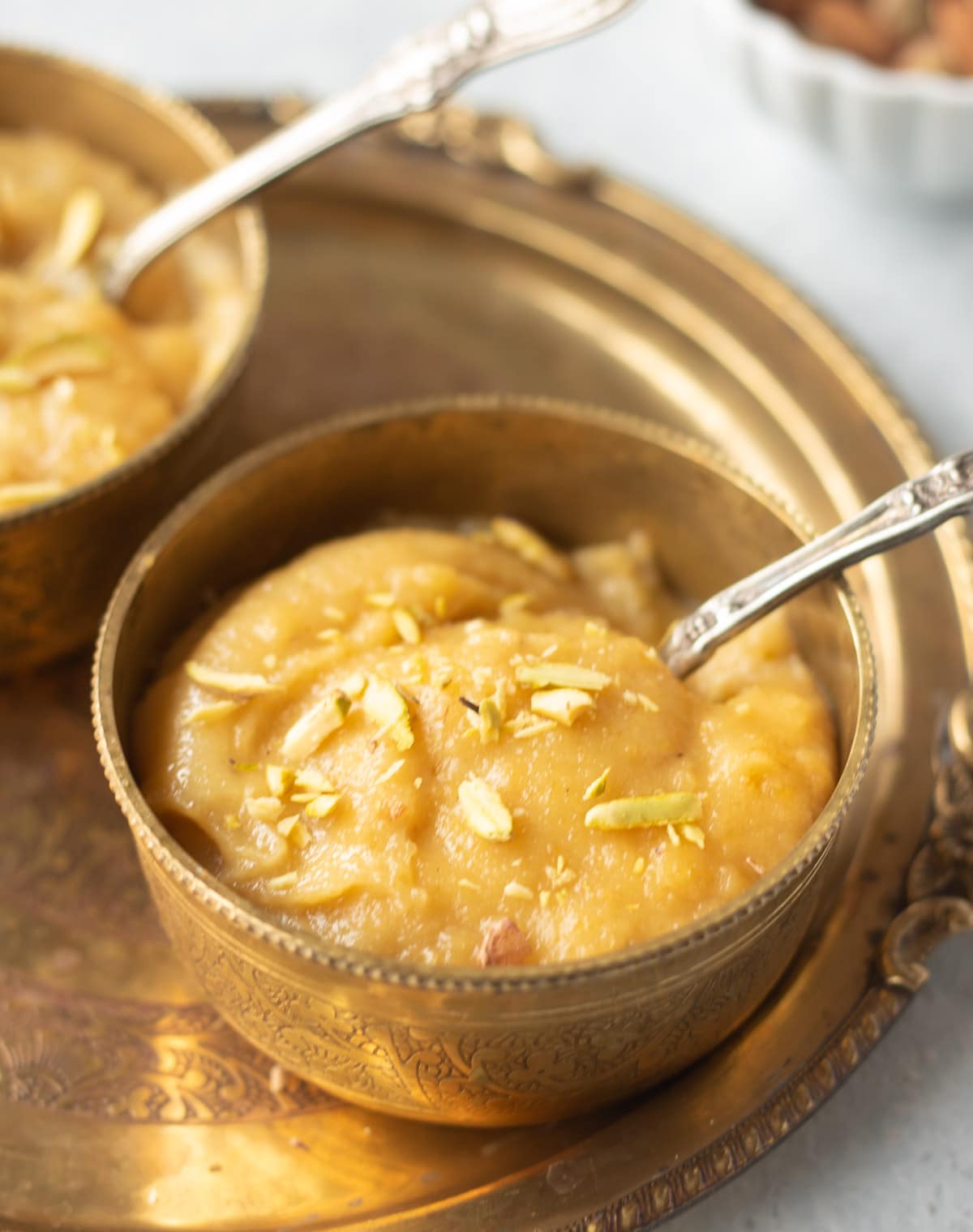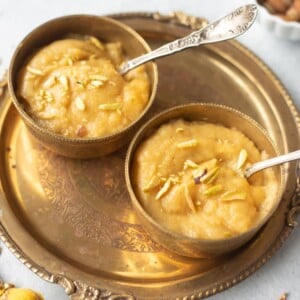We Indians always love our desserts, and halwa is a very popular one. Making halwa requires very few ingredients, and they are usually available at home.
Sooji (Semolina) halwa is the most popular choice and is a staple one in most Indian households. Other versions of halwa are – Coconut Pumpkin halwa, Moong dal halwa, Carrot halwa, broken wheat halwa, and Aata Halwa.
Recently, I have been leaning a lot into a variety of gram flour recipes. It is highly nutritious, readily available, and so versatile. While you can use it in savory recipes like khandvi and kadhi, it is also great for making sweets such as besan ladoo, magas, besan barfi, and this halwa.
Like every other halwa recipe, this Besan Halwa requires only a few ingredients like gram flour, sugar, milk, and ghee. Also, this halwa is very good for sore throats. So, if you have a cold and sore throat, this halwa is your best medicine.
You can make this halwa in a thinner consistency when you have a sore throat. I usually add 3x or more water when making this halwa for sore throat.
Watch How to Make Besan Halwa
What is Besan Halwa?
This Besan Halwa can also be called gram flour pudding (or chickpea flour pudding). The main ingredients, as I said before, are gram flour, sugar, milk, and ghee. Adding a bit of cardamom and saffron to the halwa gives it a great aroma, and you can also add some nuts, but they are optional. This halwa can be made with regular besan flour or coarse ladoo besan flour. The regular besan gives it a smooth texture, while the ladoo besan flour gives the grainy (danedar in Hindi) texture similar to Sooji Halwa. Either way, it turns out great and is delicious. It tastes a bit like besan ladoo at the first bite, and then it will melt in your mouth with the richness of ghee and sugar.
Why you will love this Besan Halwa?
Made with basic ingredients you might have in your pantry. Quick and easy to make You will love the nutty melt-in-the-mouth taste of this halwa. Great for sore throat and for little kids.
Ingredients
Besan (Gram Flour): To make this besan halwa, you can use either regular besan flour or ladoo besan flour. The later ladoo besan is coarsely ground, which helps to make the dish have a grainy texture. My family did love the halwa made either way, but the one made with ladoo besan had a little edge over the regular besan flour.
If you don’t have ladoo besan (you can also use Magaz flour) or can’t find it in the store, you can also follow the “Dhrabo” technique mentioned in my Magas recipe to get a grainy texture with the regular besan flour. This does add some steps and time to the recipe, but it will be well worth it.
Water (or Milk): I used water to make this halwa. You can also substitute with milk or use a combination of half-cup milk and 1 cup of water. But the total quantity of either of them should be the same.
Sugar: I used regular granulated sugar in this halwa. You can also use the same amount of crushed jaggery. Using jaggery gives this halwa a darker brown color, which looks amazing too.
Ghee: Do not skimp on ghee when making halwa. Use good quality store-bought ghee or use homemade ghee.
How to Make?
Take a small pot (preferably with a handle) and add water, sugar, cardamom, and saffron. Heat it on a medium-high heat until the sugar melts. Turn off the flame and keep it aside. Heat a pan on medium flame and add ghee. Once the ghee has melted, add the besan flour. Turn the flame to medium-low and roast the besan while stirring continuously until it starts turning golden brown. It will take about 12-15 minutes or more to fully roast the besan and your kitchen will be filled with a delicious nutty aroma.
Next, add a tablespoon of milk to the besan while roasting it, as it also helps to give a grainy texture. When you add milk, the mixture will fluff up. Add 1 tablespoon at a time and keep stirring. Now add the water and sugar mixture little by little while stirring continuously. Make sure to do it very slowly, as there will be some splatter when you pour the mixture into the hot pan. But as the water gradually mixes with the besan, the splatter will stop.
Soon, the halwa will start to boil and thicken, but don’t stop the stirring. When it is just thickened, add a tablespoon of ghee for the extra richness. Remove from the flame when the halwa comes out from the sides of the pan. Garnish with nuts of your choice and serve immediately.
I love to garnish with pistachios for their wonderful green color. Look at the delicious, dreamy halwa. It is so good! It is best to serve halwa warm. Serve in bowls and garnish with some more nuts.
Meeta’s Pro-Tips
Follow my pro tips to make your besan halwa delicious and mouthwatering.
Use a non-stick or heavy bottom pan to make the halwa. This halwa gives out a wonderful nutty taste, and the right way to get it is by roasting it correctly on low heat. Too much roasting will give a burnt taste, and too little roasting will make the dish raw. So, it is best to roast it till the besan flour gives out a nutty aroma. Don’t skimp on ghee while making halwa (really, any halwa). Patience is the key to making this halwa. You can either use water or milk or a combination of both to prepare this besan halwa. Using milk will give a lighter color to this halwa, but the taste will be just as good. You can add nuts, saffron, or cardamom to this recipe or skip them to your preference. Store the excess halwa in the refrigerator. Serve it by reheating it in a pan or in the microwave (30 seconds) until the ghee melts and the halwa softens.
I hope you enjoy this delicious, easy halwa recipe. Don’t forget to share a picture with the hashtag #pipingpotcurry if you make it!
More Easy Indian Dessert Recipes
Kalakand Almond flour halwa Mango Shrikhand Oats Kheer Zarda Sweet Rice (Meethe Chawal) 10+ Best Halwa Recipes

